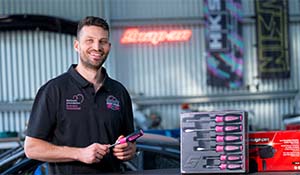Meanie 2.0
A ‘Mini’ made ‘Maxi’, this Swiss creation looked like a stock Mini on the outside, but under the skin, it was very, very different. How different? Well, for starters, the rear seats have been removed and the engine now resides in the back, driving the rear wheels.
That engine is a 2.0-litre turbocharged four-cylinder, producing 164kW and 340Nm, with a claimed sub-4.0-second 0-100km/h time and top speed of 200km/h.

A 6-speed manual transmission is matched to the turbo four, with braking handled by 260mm discs at all corners, with four-piston calipers up front and single-piston calipers at the rear.
Suspension consists of double wishbones at the front with adjustable coilover shocks, as well as adjustable, camber, caster and toe. Trailing arms are used at the rear, with similar adjustable coilover shocks and camber and toe adjustment.

Dubbed the ‘Meanie 2.0’, this heavily-modified Mini is the creation of Emil Frey Classics AG, a Zurich-based company that previously imported British-built Minis to Switzerland.
After a prototype was built in 2013, the production version came to light in late-2016, using modern reproduction bodies supplied by BMH, so no classic Minis were sacrificed to make the Meanie 2.0!

That body has been reinforced with a spaceframe chassis of chromoly steel, while the mid-rear-mounted engine and gearbox sit in a sub-frame that can be dropped out for servicing.
Getting European approval for a custom like this is, apparently, a nightmare, but Emil Frey achieved it, receiving EU Small Series Type Approval after more than 18 months’ work on emissions, noise and crash testing.

Gaining that EU approval allows for the production of up to 1,000 cars annually, but the Meanie 2.0 will be much more exclusive, with only five units to be built this year, according to Emil Frey.













